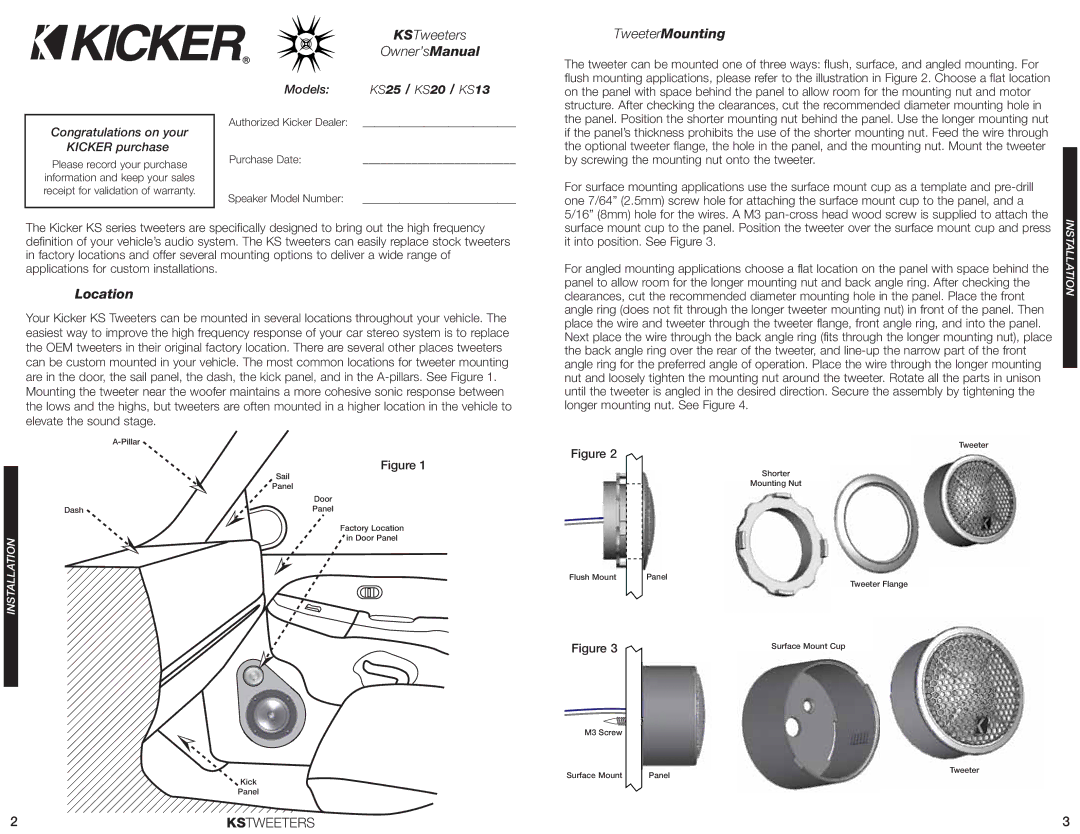KS25, KS13, KS20 specifications
Fortinet, a prominent leader in cybersecurity solutions, has continued to enhance its offerings with innovative models like the FortiGate KS13, KS20, and KS25 series. These devices are designed to deliver robust security postures and superior performance for businesses of all sizes.The FortiGate KS13 serves as a powerful entry-level firewall, perfect for small to medium-sized enterprises seeking advanced security features without the burden of high costs. Its main features include high throughput combined with low latency, which is critical for maintaining productivity while ensuring comprehensive network protection. The KS13 utilizes Fortinet’s proprietary Security Processing Units (SPUs), optimizing both performance and efficiency. This model supports a range of FortiOS capabilities, including next-generation firewall (NGFW) features, VPN support, intrusion prevention, and web filtering. With its user-friendly management interface, network administrators can easily configure and monitor security policies in real-time.
Moving up in the series, the FortiGate KS20 targets organizations requiring increased bandwidth and threat intelligence capabilities. Equipped with enhanced hardware specifications, the KS20 offers superior packet processing capabilities, making it ideal for businesses that experience heavy traffic. This model can seamlessly integrate with Fortinet’s Security Fabric, enabling interconnected security solutions across the enterprise for a holistic defense strategy. The KS20 also incorporates advanced features such as sandboxing, automated threat detection, and comprehensive logging, which empower organizations to respond swiftly to emerging threats.
At the high end of the spectrum, the FortiGate KS25 is designed for larger enterprises with complex security needs. It boasts advanced features such as AI-driven security analytics, high-availability clustering, and multi-tenancy, making it suitable for service providers and large organizations with multiple locations. The KS25 integrates with Fortinet's Cloud SD-WAN capabilities, allowing businesses to optimize application performance while maintaining secure connections across diverse cloud environments. Its centralized management capabilities and extensive support for SDN and cloud architectures provide a scalable solution that grows with the organization.
In summation, the FortiGate KS13, KS20, and KS25 series represent Fortinet’s commitment to delivering industry-leading cybersecurity solutions tailored to different organizational needs. From small businesses needing essential protection to large enterprises requiring sophisticated security infrastructures, these models leverage advanced technologies to safeguard networks against an ever-evolving threat landscape. With their strong emphasis on performance, scalability, and integration, they empower organizations to enhance their cybersecurity posture efficiently and effectively.

